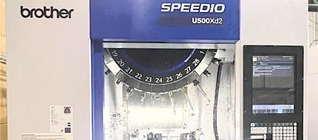Aluminium Casting Alloy LM9
This alloy conforms to BS:1490 1988 LM9. Castings are standardised in the as cast (M) condition, in the precipitation treated (TE) condition or in the fully heat treated (TF) condition.
Chemical Composition
| % | % | % | |||
|---|---|---|---|---|---|
| Copper | 0.2 | Magnesium | 0.2-0.6 | Silicon | 10.0-13.0 |
| Iron | 0.6 | Manganese | 0.3-0.7 | Nickel | 0.1 max |
| Zinc | 0.1 | Lead | 0.1 max | Tin | 0.05 max |
| Titanium | 0.2 | Aluminium | Remainder | Others each | 0.05 max |
| Others total | 0.15 max |
Mechanical Properties of Aluminium (Sand & Die Casting) Alloy LM9
|
|
M Gravity Die Cast |
TF Sand Cast |
TF Gravity Die Cast |
TE Sand Cast |
TEGravity Die Cast |
|
0.2% Proof Stress (N/mm2) |
95-120 |
220-250 |
270-280 |
110-130 |
150-170 |
|
Tensile Strength (N/mm2) |
190 |
240 |
295 |
170 |
230 |
|
Elongation (%) |
3-5 |
0-1 |
0-1 |
1.5 |
2 |
|
Impact Resistance Izod (Nm) |
- |
0.7 |
1.4 |
1.4 |
2 |
|
Brinell Hardness |
75-85 |
95 |
110 |
70 |
85 |
|
Modulus of Elasticity (103 N/mm2) |
- |
71 |
71 |
71 |
71 |
|
Shear Strength (N/mm2) |
- |
200 |
230 |
120 |
160 |
Strength at Elevated Temperatures
Tensile properties are unaffected by temperatures up to 150°C but prolonged heating at temperatures significantly higher reduces the strength. For example, the tensile strength of chill cast LM9-TF at 200°C (after heating for 500h) is approximately half that at room temperature, and only 25% of the original value at 250°C.
Physical Properties of Aluminium (Sand & Die Casting) Alloy LM9
|
|
|
|
Coefficient of Thermal Expansion (per °C @ 20-100°C) |
0.000022 |
|
Thermal conductivity (cal/cm2/cm/°C @ 25°C) |
0.35 |
|
Electrical conductivity (% copper standard @ 20°C) |
38.0 |
|
Density (g/cm3) |
2.68 |
|
Freezing range (°C) approx. |
575-550 |
Machinability
Very considerable tool wear occurs in machining this aluminium alloy, but there is not the same tendency to drag that occurs with high Silicon alloys containing no other alloying elements, e.g. LM6. Carbide-tipped tools with large rake angles and relatively low cutting speeds give good results. A cutting lubricant and coolant should be employed.
Corrosion Resistance
LM9 exhibits excellent resistance to corrosion under both ordinary atmospheric and marine conditions.
Anodising
LM9 Can be anodised by any of the common processes, the resulting protective film ranging in colour from grey to dark brown, depending on the method employed.
Heat Treatment
Heat Treatment produces high strength and hardness
Applications and General Notes
LM9 alloy is used where the fluidity and corrosion resistance of LM6 are required with high strength and hardness. It is equally suitable for sand casting and gravity die casting and is extensively used for low pressure castings, for cover plates and instrument cases. It is useful for electroplated components. LM9 has poor weldability and brazeability.
Notes for Designers of Non-Ferrous Castings
DOWNLOAD NOW Guides
HOW can MRT Castings help you?
I want...
- Select what you need
- a complete solution
- to develop a new component from initial concept
- advice on what processes are best suited to my component
- prototypes before committing to production tooling
- to re-shore production to the UK from overseas
- a new supplier to use existing tooling
- to convert a machined from solid part to a casting
- a supplier who can meet stringent quality requirements
New at MRT Blogs
Once again, MRT Castings have partnered with Brother and their UK agent, Whitehouse Machine Tools – a relationship that has spanned more than 25 years.
Read MoreAt a time when young engineering talent is in short supply, MRT Castings is taking a proactive approach to recruitment.
Read MoreUnit 4 Rebuild
11th Sep 2025
MRT is delighted to announce the completion of the latest phase of our on-site redevelopment programme. Following the relocation to our new foundry building in 2021, Unit 4, the erstwhile home of our diecasting operations, was left empty and to be honest, a little worse for wear.
Read More



